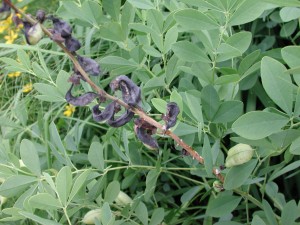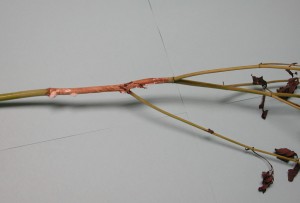Sclerotinia sclerotiorum
Pathogen: Sclerotinia sclerotiorum
Hosts Include: Anemone, Aquilegia, Aster, Bellis, Campanula, Coreopsis, Delphinium, Digitalis, Helianthus, Hosta, Iris, Liatris, Lupionus, Papaver, Platycodon, Rudbeckia, and Scabiosa.
Symptoms: Pre and post-emergent damping off, crown rot, and blighting of foliage and petioles. Small, hard, irregular, black structures called sclerotia may be present on or in plant tissue (especially inside stem and petiole tissue). White fluffy growth on affected plant parts, this is most readily visible in high humidity.
Spread: Sclerotia, long term survival structures, are found in soil and on plant debris. Movement of these structures is the primary means of disease spread. Disease can also be spread by the movement of infected plant material. Under certain environmental conditions mushroom like structures (apothecia) are produced. These release air borne spores.
Management: Field soil should be sterilized before using it in growing media. Susceptible crops should not be grown in areas with a history of white mold problems. Additionally, good sanitation is important to limit spread. Control weeds in production areas, as some weeds are hosts to S. sclerotiorum. Fungicide drenches can be used to protect plants from infection.





 Print
Print Email
Email




